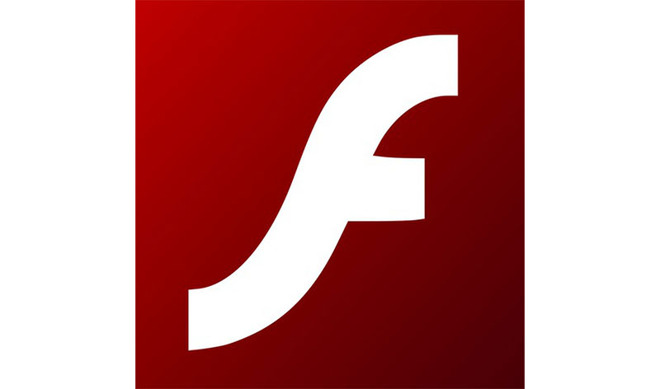Adobe Flash disabled in latest Safari Technology Preview
Presaging what will be the final nail in the coffin for Adobe Flash on Safari, Apple on Wednesday disabled support for the much-maligned multimedia plug-in in the latest version of Safari Technology Preview.

Apple quietly announced the imminent demise of Flash on Safari in a set of release notes accompanying Safari Technology Preview 99. Along with a number of enhancements to WebKit code and assets is mention of a single deprecation under "Legacy Plug-Ins," which simply states, "Removed support for Adobe Flash."
CNET was first to note the change on Wednesday.
Introduced as a developer-focused experimental browser in 2016, Safari Technology Preview provides an early look at upcoming Web technologies that will appear -- or in the case of Flash, won't appear -- in both iOS and macOS. The browser is in many ways a standalone beta version of Safari.
The death of Flash is a long time coming. A once-pervasive standard for distributing rich media over the internet, the asset-hungry, proprietary software is now viewed as out-of-date and unsuitable for a mobile-first world. Late Apple cofounder Steve Jobs said as much some 10 years ago in a widely circulated letter appropriately titled "Thoughts on Flash."
Following increased competition and pushback from the likes of Apple, Google and other browser makers, Adobe in 2017 said it would pull the plug on Flash in 2020. Now, with five words, Apple is signaling that time is nigh for Safari.
For iOS device users, the end of Flash is a non-issue as the platform never integrated the web standard. Safari on Mac has shipped with Flash disabled since macOS Sierra, leaving users to manually activate the software on a case-by-case basis.

Apple quietly announced the imminent demise of Flash on Safari in a set of release notes accompanying Safari Technology Preview 99. Along with a number of enhancements to WebKit code and assets is mention of a single deprecation under "Legacy Plug-Ins," which simply states, "Removed support for Adobe Flash."
CNET was first to note the change on Wednesday.
Introduced as a developer-focused experimental browser in 2016, Safari Technology Preview provides an early look at upcoming Web technologies that will appear -- or in the case of Flash, won't appear -- in both iOS and macOS. The browser is in many ways a standalone beta version of Safari.
The death of Flash is a long time coming. A once-pervasive standard for distributing rich media over the internet, the asset-hungry, proprietary software is now viewed as out-of-date and unsuitable for a mobile-first world. Late Apple cofounder Steve Jobs said as much some 10 years ago in a widely circulated letter appropriately titled "Thoughts on Flash."
Following increased competition and pushback from the likes of Apple, Google and other browser makers, Adobe in 2017 said it would pull the plug on Flash in 2020. Now, with five words, Apple is signaling that time is nigh for Safari.
For iOS device users, the end of Flash is a non-issue as the platform never integrated the web standard. Safari on Mac has shipped with Flash disabled since macOS Sierra, leaving users to manually activate the software on a case-by-case basis.

Comments
Also, Steve Jobs was right about Flash!
I wish everyone would stop using flash already.
Where are they using Adobe Flash that couldn't be done with HTML5 and JS? Even Apple used Adobe Flash in MobileMe.
With Safari and the Developer menu on the top menu bar, javascript can be easily disabled with a just a few clicks ( or a user programed key stroke). This makes it easy to view a lot of websites, without loading any of their ads, pop ups and videos. It works better than any ad blockers and even gets rid of those pop ups that prevents you from reading the articles, unless you disable your ad blockers or whitelist the site.
Of course javascript can not be disabled for all the sites I visit but many of the news sites where I just want to read an article to two, without all their annoying pop ups and ads, just disabling javascript is the easiest way to get rid of those ads. Plus doing so, my old MacBook with a core2duo feels like it has an i7 chip in it and without my fan going into high speed on certain sites. It's the same with my 2nd generation iPad. I can easily disable javascript in the Safari setting and the iPad feels like one of the newer ones, when visiting websites that mainly uses javascript for ads.
Now this is from a consumer using the internet point of view and not that of a developer or software engineer, where there might be other issues with javascript.
For anyone still needing Flash to access legacy web sites, use Google's Chrome browser instead of Safari. It has Flash baked in, and updates itself in a secure fashion so that you don't have to figure out whether a Flash update alert is genuine or malware. (Our payroll processor still uses Flash...yeah, what could possibly go wrong with that?)
As for Adobe ending support for it themselves, that just means the web plugin, right? They’re not actually abandoning the animation tool are they?
The problem is for legacy users until October 2020 when Flash support comes to an end. But don't imagine for a minute that the remaining Flash sites, or games, or whatevers, will suddenly, err, flash out of existence. There's nothing to stop them from continuing to exist.